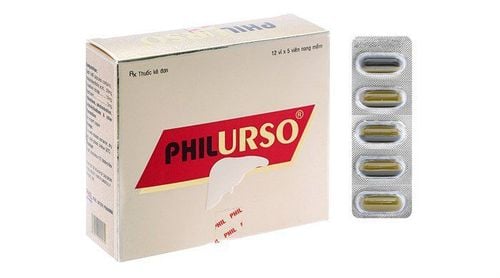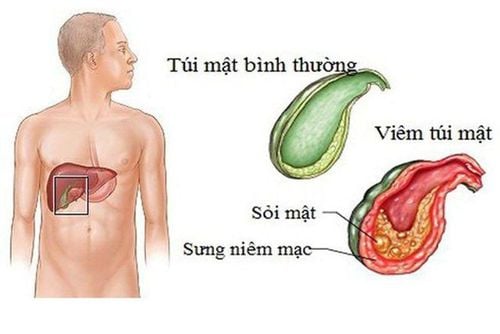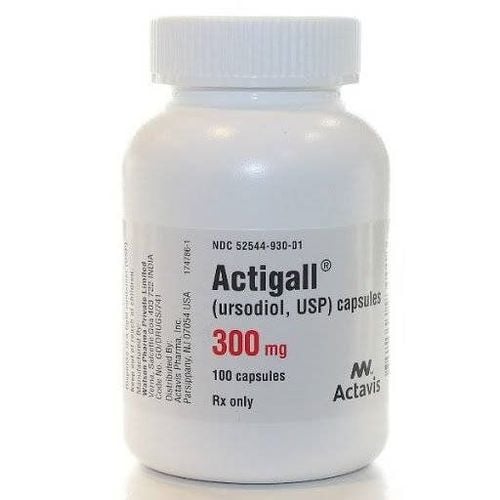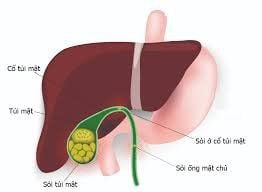This is an automatically translated article.
Stones stuck in the bile duct can cause damage to many organs such as the pancreas, the digestive system,... So when a stone is stuck in the bile duct, how should it be handled? Please read the article below about stones stuck in the biliary tract.
1. What are gallstones?
Gallstone is a gastrointestinal - hepatobiliary disease, formed due to a disorder of cholesterol metabolism; bile pigments and bile salts. Stones of different shapes and sizes form in places such as the intrahepatic bile duct, gallbladder, and common bile duct. In particular, common bile duct stones (OMC) account for about 60% of gallstone cases.
Gallstones, gallstones can happen to anyone, but some people have a higher risk of this condition:
People with a family history of gallstones. People who lose weight too quickly. Elderly people (over 60 years old). Pregnant women. Women who use oral contraceptives for a long time. The diet contains a lot of fat, the patient is sedentary. In most cases of gallstones, gallstones do not cause obvious symptoms. But when stones get stuck in the bile ducts, they can cause some of the following symptoms:
Pain: Pain caused by stones stuck in the bile ducts usually occurs in the upper right abdomen, near the ribs. . The pain is often very intense, in some cases, the pain can spread to the back or shoulder area. Jaundice: When stones get stuck in the bile ducts, it will interfere with the function of the liver, so the patient may experience symptoms of jaundice. Dark urine: Some people with gallstones or gallstones experience dark urine, even when they're drinking enough water. Fever, chills: This is a sign that the bile duct or gallbladder is inflamed. The triad of pain, jaundice and fever due to gallstones is also known as Charcot's triad. Some other signs such as: discolored stools, nausea/vomiting, low blood pressure...
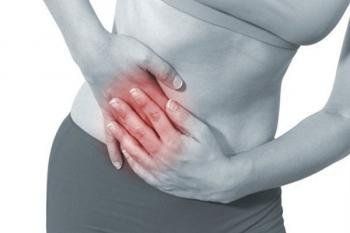
Cơn đau do sỏi kẹt trong đường mật gây ra thường xuất hiện ở vùng bụng trên, bên phải
2. Methods of treating gallstones
Depending on the medical condition, the doctor will offer appropriate treatment methods for the patient.
2.1 Endoscopic retrograde cholangiopancreatography (ERCP .)
Endoscopic retrograde cholangiopancreatography (ERCP) is an advanced technique that can help accurately diagnose and treat cholelithiasis. For example, acute pancreatitis due to stones stuck at the ampulla of Vater; inflammation/infection of the biliary tract due to stones, narrowing or obstruction of the biliary tract, worms in the bile ducts,... This method has a number of advantages such as:
Minimizing invasiveness, helping doctors identify Accurate location and successful gravel removal. Patients will not have to undergo major surgery, minimize the risk of infection and bleeding, and have few complications. Low cost of implementation in addition to less impact on health Reduced pain and short hospital stay, quick recovery time health and aesthetics.
2.2 Percutaneous biliary stone lithotripsy
The surgeon will poke a single line about 3-5mm from the outside of the body. The site of penetrating the skin outside the abdominal wall into the intrahepatic biliary tract. This technique is performed under the guidance of intraoperative ultrasound machine, DSA background eraser angiography machine and endoscopic camera. The doctor will create a small tunnel into the intrahepatic bile duct, then a wide range of dilatation equipment with high power laser lithotripsy will examine the entire intrahepatic biliary system, including the right hepatic duct, the left hepatic duct, the entire common bile duct.
Locations where gravel is detected will be crushed and sucked out, then pumped to remove all gravel. After finishing the lithotripsy, the patient will be re-examined with X-ray and ultrasound of the biliary tract to ensure that there are no stones left. Therefore, percutaneous biliary stone lithotripsy requires to be carried out in large hospitals with modern and synchronous medical equipment. In addition, the team of surgical doctors is well-trained and specialized. Percutaneous biliary lithotripsy has a number of advantages as follows:
This is considered the most advanced minimally invasive and effective treatment. Especially, this method is suitable for patients who are elderly and weak, have co-morbid systemic diseases or who have had a history of multiple biliary tract surgeries. The patient will be under local anesthesia, fully awake, with little pain during the procedure. Some common risks of complications such as bleeding, infection, complications from anesthesia... are well controlled. Quick recovery time, early discharge from the hospital
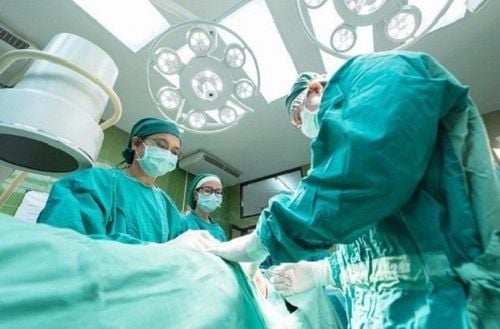
Kỹ thuật tán sỏi đường mật qua da mang lại hiệu quả ưu việt nhất
2.3 Gallstone surgery (Open surgery)
This method is indicated when the patient is unable to perform or has failed the above 2 methods. Open surgery is considered to carry a higher risk of complications for the patient. You may have biliary stricture or damage to the lining of the biliary tract... when doing this method.
3. What to do to prevent gallstones?
To be able to reduce your risk of gallstones by taking some of the following measures:
Maintain a low-fat scientific diet: You should limit foods rich in fat and have nutritional value. low nutritional value such as fast food, french fries, ... Patients need to switch to eating foods rich in healthy fats such as fatty fish, avocados, ... Add fiber: Supplement Whole grains, fruits and vegetables rich in fiber can also help prevent gallstones, gallstones. Lose and maintain a healthy weight: You can do this by combining a healthy diet and regular exercise. In general, gallstone disease is completely preventable and treatable. You should maintain a healthy lifestyle and when signs of disease appear, you should be consulted and examined by a quality hospital.
Please dial HOTLINE for more information or register for an appointment HERE. Download MyVinmec app to make appointments faster and to manage your bookings easily.





